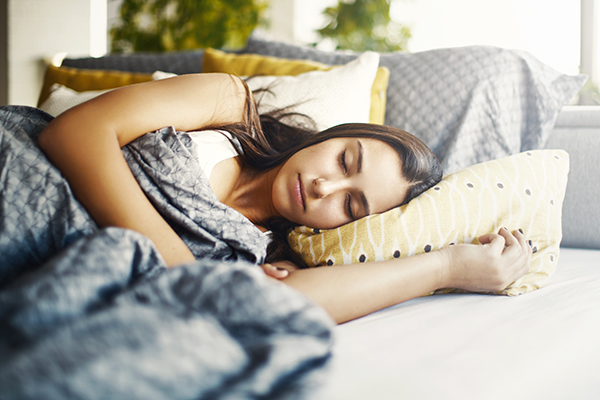Meditation for Beginners: How to Get Started and Stick With It

Beginning a practice of any sort can feel daunting and prompt lots of questions, whether it’s yoga, running, or meditation.
“Starting something new or changing your routine can be hard, and finding the time to add another thing to your life can be overwhelming,” says Elanit Sellers, CPT.
“However, I find adding things to your life that benefit you make your day less stressful, not more,” she adds.
And meditation does just that — while not requiring any special gear or even a lot of time.
Read on to learn the ins and outs of meditation for beginners, including science-backed benefits and proven tips for sticking with a meditation practice.
The Benefits of Meditation
The benefits of meditation have been widely studied, with perks ranging from better sleep and mood to physical changes in the brain and the body.
1. Meditation physically changes your brain
According to a 2011 article in Psychiatry Research: Neuroimaging, a meditation practice actually changes the structure of your brain.
The study reports that participants who practiced a type of meditation called mindfulness-based stress reduction showed changes in gray matter concentration in the brain.
These brain areas centered around learning and memory processes, emotion regulation, and more.

2. Meditation may boost mood
A 2016 study in the journal Military Medicine reported that mindfulness meditation activates the left prefrontal cortex, and thus helps reduce vulnerability to depression, as well as rumination and emotional reactivity.
The study states that “meditation changes the relationship to negative thoughts by making one more aware, yet more open and accepting of negative experiences, thereby decreasing their intensity.”
The same study also reported that meditation can lead to boosted self-compassion.
3. Meditation may impact blood pressure
According to a study in the Journal of Hypertension, non-transcendental meditation shows promising results for lowering both systolic and diastolic blood pressure.
Another study reports that across various age groups, participants who practiced meditation and yoga had a decrease in blood pressure.

4. Meditation may help you sleep better
A consistent meditation practice has been shown to improve sleep. A 2017 study in the International Journal of Health Sciences and Research reported that meditation did improve sleep quality and had positive effects on certain conditions that usually impact sleep.
According to the study, “meditation shortens time required to fall asleep, enhances the depth of sleep and improves overall quality of sleep.”
Meditation for Beginners: 3 Simple Practices
There are countless ways to meditate. They all have the same goals — concentrating on just one thing, whether it’s your breath, your body, or a mantra (a word or words to focus on).
Similar to finding what type of exercise or workout you enjoy most, finding a meditation you truly enjoy can take some time.
“Find what works for you,” says Sam Rudra Swartz, a certified meditation teacher. “And don’t worry so much about evaluating the practice, and instead see what resonates the most.”
1. Guided meditation
Guided meditation is ideal for beginners and can be done in person or virtually. You can do it alone (like with an app) or with a group. A teacher will talk you through the meditation as you listen and silently react accordingly.
A guided meditation can include a variety of techniques, such as breathwork, mantras, chanting, or chakra (energy centers) work.
2. Body scanning
One of the most popular meditation techniques for beginners is body scanning, where you focus on specific parts of your body, one at a time. This technique allows you to easily concentrate on any sensations, feelings, or aches within your body.
Body scanning can be done with or without a teacher to guide you. Start at your head or your toes, and work your way in the opposite direction, focusing on each individual part of your body.
3. Mindfulness meditation
Another beginner-friendly practice is mindfulness meditation. With this practice, you focus on your breath and any thoughts that wander through your mind.
The goal isn’t to control or change your breath or thoughts, but to simply notice them and let them pass.
You are focusing on being present in your mind and body while slowing down in the here and now.

How to Get Started With Meditation
To stay on track with meditation, Sellers recommends scheduling your practices, as you would a meeting or workout.
“I like to schedule it in my calendar in order to make time for it,” she says. “This way, the habit becomes a task for the day and not something I can just skip,” she explains.
What to wear
Wear anything that you can sit comfortably in. Choose material that isn’t itchy or scratchy, and choose clothing that won’t hinder a sitting posture or dig into parts of your body. Aim for looser clothing that will keep you at a comfortable body temperature.
How to sit
Your first meditation “tool,” Swartz says, is your posture or chosen position. He recommends a sitting position, rather than lying down. Resting on your back is important for deep relaxation (like savasana at the end of a yoga practice).
With meditation, the goal is to stay aware and alert.
Choose any comfortable seated position — in a chair, up against a wall, with your legs crossed, or with your legs supported.
“We encourage people to have their back off of the chair or the wall,” says Swartz. “The idea is to be as tall as possible.”
Keep a tall spine, pull your shoulders back to open up your chest, and slightly dip your chin to elongate the back of your neck.
“With stress, our shoulders collapse in, so with a tall seated pose, you want your heart open both physically and energetically,” he adds.
Where to meditate
Another important part of a meditation practice is your location. Your meditation space doesn’t have to be complicated or fancy.
It can simply be a chair, a corner, or someplace in your home where your body is cued that it is time to meditate.
Aim to meditate in the same place every time, especially at first.
“Have a space that is dedicated to hold that energy for meditation,” says Swartz.
When and how long to meditate
Once you have a place, set a time. Swartz highly recommends meditating at the same time each day. It should be long enough for you to commit but not so long that you can’t make time.
Don’t overdo it, he says. If finding 15 minutes a day to meditate is too much, aim for 10 or even five minutes. The goal is to commit to everyday practice.
“Do it every day, do it at the same time every day so your body gets to know, ‘this is meditation time,'” he says.
Making meditation a habit
Building a meditation practice takes dedication. One way that Swartz committed to his practice was finding a meditation community that held him accountable.
“By having that communal support and having people around to ground you in the space, it allows you to be more present because when the mind gets active,” he says. “You can’t just give up and say ‘I’m out of here.’ You can’t just move because you don’t want to disturb someone else practicing. You can’t just get up and leave.”
You can also find an online community where you can set aside time each week to attend. Put it on your calendar, invite a friend, and stick with it.
